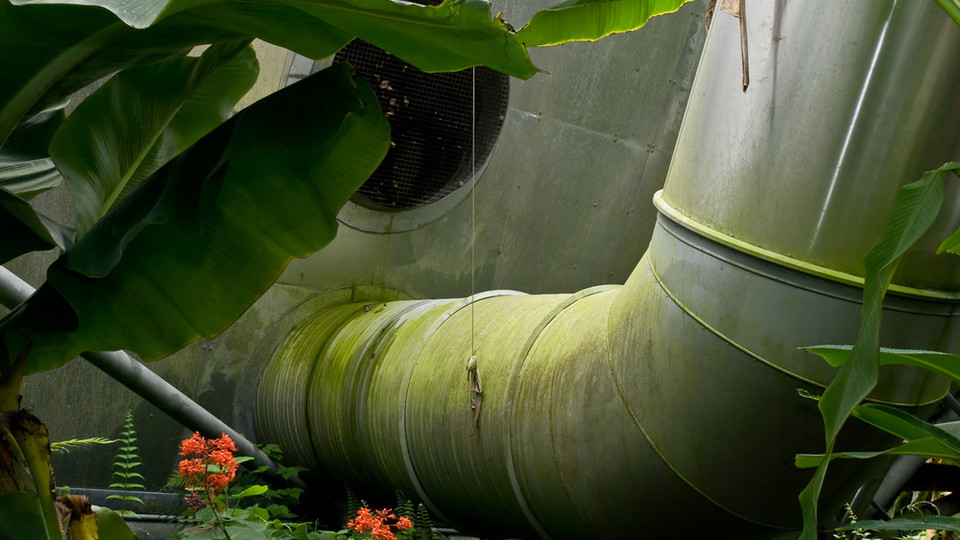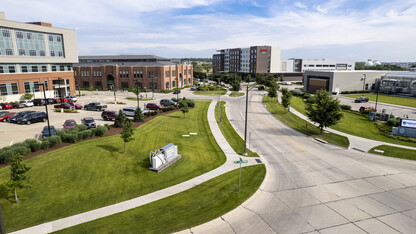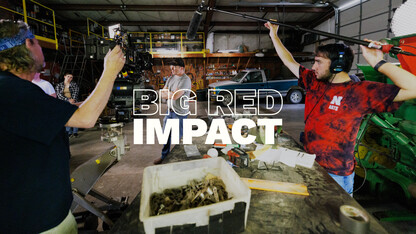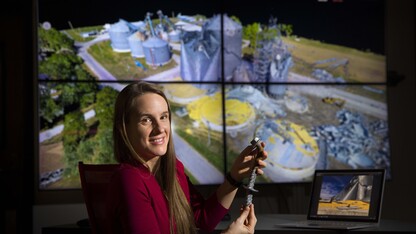· 5 min read
Fritz’s book explores large enclosed landscapes

A new book by Nebraska’s Dana Fritz uses photographs to explore the world’s largest enclosed landscapes.
The book, “Terraria Gigantica: The World Under Glass,” was recently published by the University of New Mexico Press. Fritz will discuss the project in a 5:30 p.m. Nov. 2 public lecture and book signing at Sheldon Museum of Art.
Fritz began thinking about the project after visiting several Victorian glasshouse conservatories, such as the Kew Gardens in England.
“To be in them physically, they’re warm, they’re damp and they’re full of vegetation,” Fritz said. “And I started doing some research on how they functioned socially and culturally, and it was interesting to find out that they were like a refuge for people in these dirty, industrial places. They really collected the world in one place, like a living museum, so I wondered if we have contemporary versions of this.”
That’s how she came up with the idea to photograph some of the world’s largest vivaria.
“It was lucky for me because a couple of them are in Omaha,” she said.
Omaha’s Henry Doorly Zoo and Aquarium is home to both the Lied Jungle and Desert Dome.
The Lied Jungle, built in 1992, is America’s largest indoor rainforest, and the exhibit is one of the largest of its kind in the world. It covers one and a half acres and is 80 feet tall, about the same as an eight-story building. The Lied Jungle was the zoo’s first total immersion exhibit. Guests can see, touch, smell, hear and become part of the natural rainforest environment, while observing animals that are free-ranging or contained behind water or rock barriers.
The Desert Dome, which opened in 2002, is the world’s largest indoor desert and is located under the world’s largest glazed geodesic dome. It contains 84,000 square feet on two levels and stands 13 stories tall.
“It’s really interesting to notice the difference in the design between the Lied Jungle and the Desert Dome,” Fritz said. “It’s not just that they are different climates, but it’s actually a different idea. The jungle was founded on the idea of immersion and fantasy. For the Desert Dome, you can’t imagine that you’re in the desert because there’s not enough coverage from the plants. It’s really more about the drama of the landscape. I think the design is so strong there, and it’s beautiful.”
Also included in the book are photographs of Biosphere 2 in Arizona and the Eden Project in the U.K.
Biosphere 2, now run by the University of Arizona and located near Tucson, serves as a unique large-scale experimental apparatus housing seven model ecosystems with active research by teams of multidisciplinary scientists. It was constructed between 1987 and 1991 by Space Biosphere Ventures.
The Eden Project, located in Cornwall, U.K., is an educational charity. Massive Biomes house the largest rainforest in captivity, as well as plants, exhibitions and contemporary gardens. It opened in 2001.
Together, these architectural and engineering marvels stand as working symbols of our complex relationships with the environment and serve to entertain and educate tourists, while also supporting research.
Fritz was awarded an artist residency to continue her work at Biosphere 2.
“I went many, many times, both with Hixson-Lied Endowment support and sometimes without,” she said. “That was incredible. Over the three years of my residency, I went there several times to photograph.”
The Eden Project is an environmental education facility.
“It is so amazing,” Fritz said. “They built it as part of a reclamation project on the site of a China clay pit that was basically scraped clean. It was a dead space, literally nothing could grow in there naturally. It’s incredible to see the abundance of plant life there now.”
In some of her photographs, the viewer sees an exit sign or an electrical plug in the photograph.
“I’m really interested in these collisions, and this place where the natural and artificial meet, either where they are indistinguishable or where there is some spatial confusion,” Fritz said.
Fritz likes that these vivaria are focused on education, research and conservation.
“It feels like science is under threat, and so I like anything that promotes research, science education and environmental education,” she said. “I think these are basic needs of our society and our planet.”
Fritz is eager to have the book released.
“The book is a career milestone for me,” she said. “It may be a once-in-a-lifetime achievement, seriously, because it’s been 10 years since I started working on the project.”
Fritz hopes to do a lot of book release events and to create opportunities for people to have conversations about these environmental issues.
“I don’t want to tell people exactly how to think, but I do want to encourage people to reflect,” she said. “I don’t think that this book provides any answers. I think it may suggest some questions. I hope it invites reflection.”








